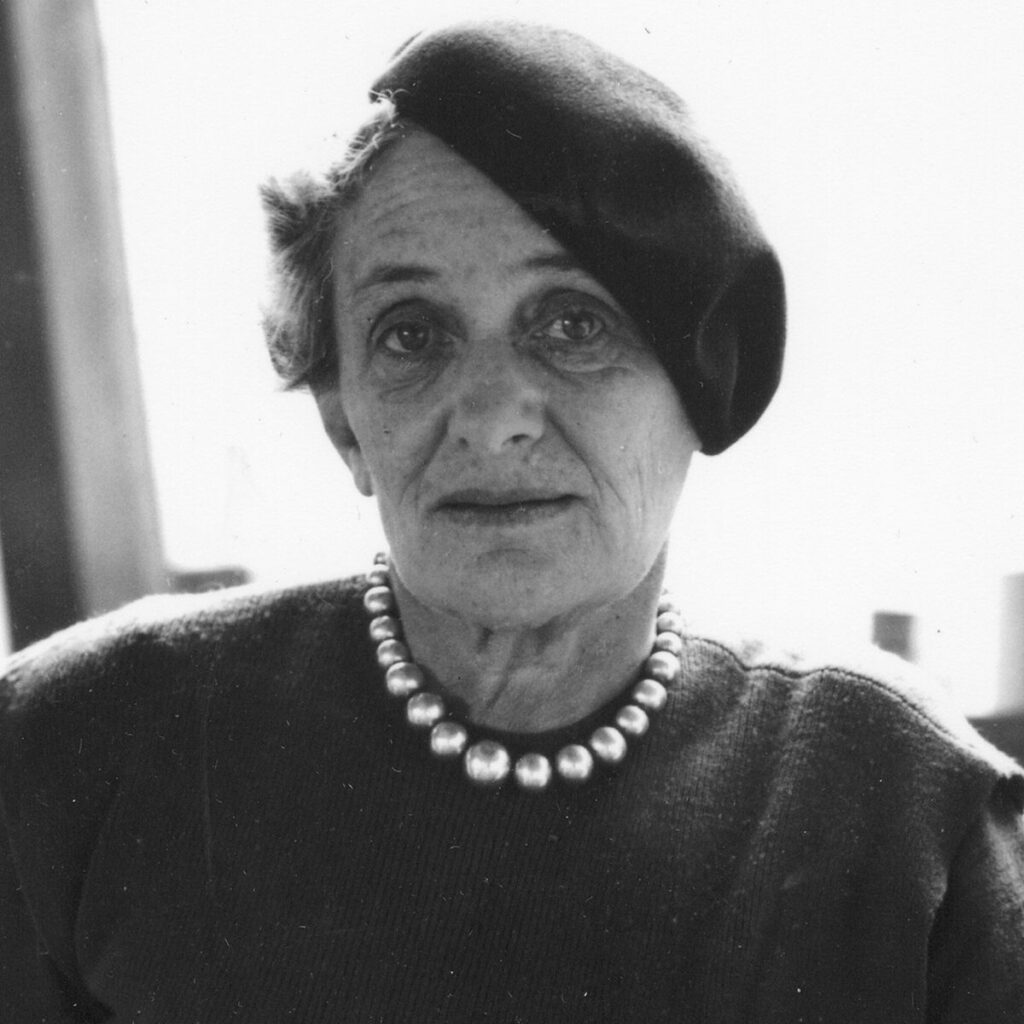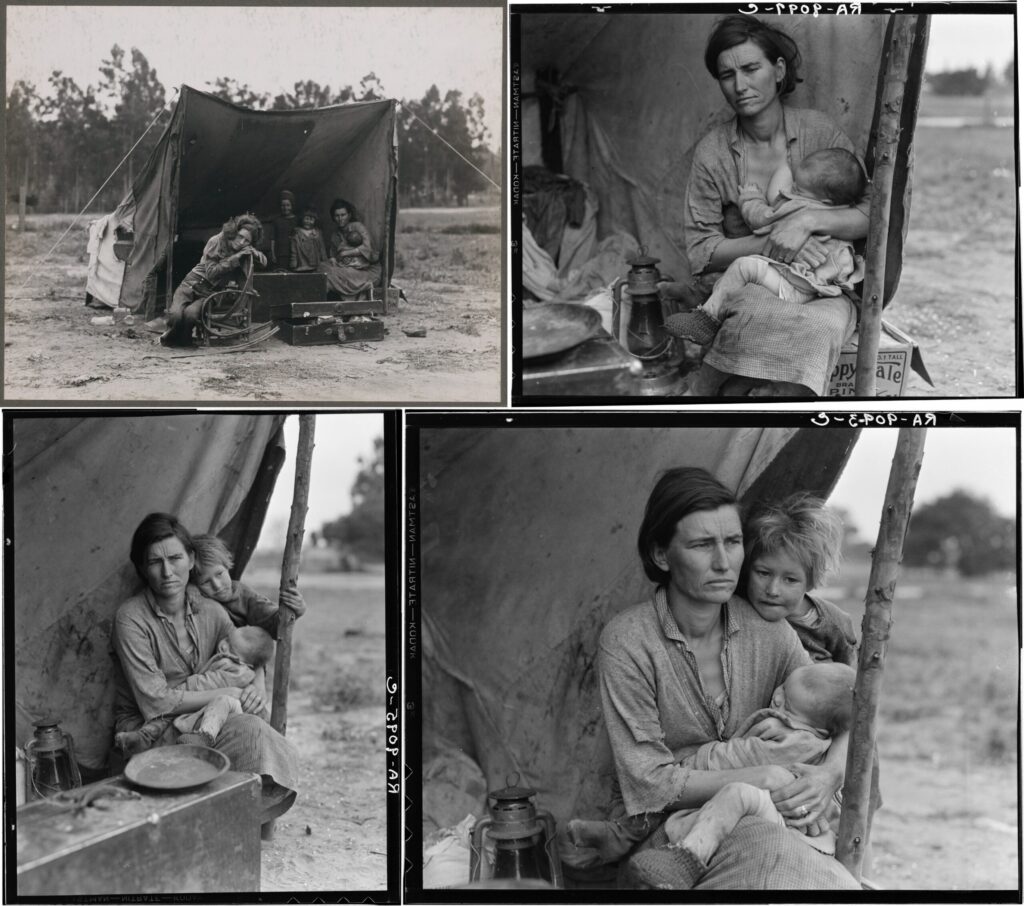Let’s take a closer look at Dorothea Lange, an amazing photographer who left her mark on history with a very powerful photo called Migrant Mother. This photo became a symbol of the tough times during the Great Depression, telling the story of migrant workers in the 1930s. In this article, we’ll explore Lange’s life, her journey as a photographer, the story behind Migrant Mother, and why this image became so important.
Who was Dorothea Lange

Born in 1895, Lange became one of the most important photographers of the 20th century. Despite facing challenges like polio, she followed her love for taking pictures. Lange’s career took a big turn when she started taking photos of people struggling during the Great Depression. What made her stand out was her unique way of capturing not just the problems but also the human side of the story.
Her Career
Lange began her career as a portrait photographer in San Francisco, but she soon shifted her focus to capturing the social and economic conditions of the time. In the 1930s, she worked for the Farm Security Administration, using her camera to show the strength and dignity of people facing tough times.
What’s Happening in Migrant Mother

| Artist | Dorothea Lange |
| Date Created | February 1936 |
| Medium | Gelatin silver print |
| Genre | Documentary Photography |
| Period | Great Depression |
| Dimensions | 11 x 14 inches |
| Series/Versions | Multiple versions exist |
| Where is it housed? | Library of Congress, Prints and Photographs Division |
In 1936, Lange was in Nipomo, California, taking pictures to show the effects of the Great Depression. That’s when she met Florence Owens Thompson, a mother of seven who was going through really hard times. Lange’s photo captured the tough reality of Thompson’s life and became a symbol of the difficulties faced by many during that time.
Analysis
Now, let’s break down the photo. It’s black and white, making it really stand out. The composition draws your attention to Florence Owens Thompson, the main person in the photo, and her kids huddled around her. Look closely, and you’ll see details like the worn-out clothes, the dirt on the kids’ faces, and the lines on Thompson’s forehead. All these things tell a story of struggle. The photo isolates the family, showing how alone they must have felt in such a tough situation.
Interesting Facts about Migrant Mother

Identity of the Migrant Mother: At first, Lange got some details wrong. She thought Florence Owens Thompson was a 32-year-old widow, but it turns out she was married, and her husband was away when the photo was taken.
Immediate Impact: The photo got a lot of attention right away, becoming an iconic representation of the Great Depression. It was published in newspapers and magazines, helping people understand the hardships faced by many.
Ethical Concerns: Some people criticized Lange for her approach, saying she was taking advantage of the people she photographed. But, despite the controversy, her work remains a powerful way of telling stories through pictures.
Multiple Versions: Lange took several shots during the encounter, and there are different versions of the photo. Each one captures different moments and expressions, adding more layers to the story.
Zooming In
Now, let’s zoom in on some details to get a better understanding of what was happening during that time.
Life in the 1930s
Imagine living in the 1930s. The Great Depression was hitting hard, making it tough for many families to get by. Jobs were scarce, and people were moving around in search of work. This is where Lange’s work becomes really important. Through her photos, she showed the rest of the country what life was like for those who were struggling.
Florence Owens Thompson’s Story
Now, let’s talk about Florence Owens Thompson, the woman in the photo. She was just 32 years old and had seven kids. Imagine trying to take care of seven kids during such a difficult time. Thompson’s husband was away, which made things even tougher. When Lange met her, Thompson and her kids were living in a makeshift camp with other families who were also going through hard times. Thompson was doing everything she could to provide for her kids, and that struggle is what Lange captured in that iconic photo.
Behind the Lens
Lange wasn’t just a photographer; she was a storyteller with her camera. She didn’t just take pictures; she told the stories of the people she met. Lange had a way of making her subjects feel seen and heard, and that’s why her photos are so powerful. She didn’t just focus on the problems; she focused on the people going through them.
Impact of Migrant Mother
When Lange’s photo was published, it had a big impact. People all over the country saw it and felt a connection to the struggles of those in the photo. The government also took notice. Migrant Mother became a symbol for the need to help those who were suffering. The photo helped in getting aid to the families affected by the Great Depression.
Legacy of Lange’s Work
Dorothea Lange’s work wasn’t just about taking pictures. It was about using her camera as a tool for change. Her photos became a part of history, telling the stories of real people facing real challenges. Lange’s legacy lives on not just in the pictures she took but in the impact those pictures had on the world.
Frequently Asked Questions
How did Dorothea Lange influence the world?
Lange was employed by a government program in the 1930s that tracked aid given to farmers who had suffered greatly as a result of the collapse of the American economy. Her depictions of families living in abject poverty highlighted the tales of individuals who had suffered misfortune. The American population also showed them sympathy and support.
What was the purpose of Dorothea Lange’s Migrant Mother?
In 1936, Dorothea Lange captured this image while working for the Farm Security Administration (FSA), an American government program created during the Great Depression to alleviate poverty among farmers.
Conclusion
Migrant Mother isn’t just a photo; it’s a time capsule that takes us back to a difficult period in American history. It’s a work of art that still speaks to us today, reminding us of the strength, resilience, and human cost of tough times. Dorothea Lange didn’t just capture an era; she captured the essence of the people who lived through it. Her lens told stories that needed to be told, stories that still resonate with us today.













